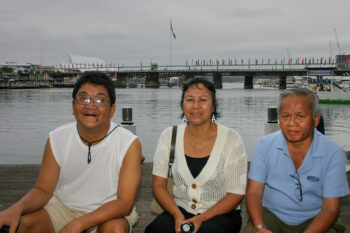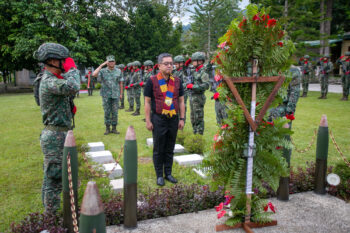QUEZON CITY (MindaNews/05 May) — Edward de Bono talks about the “peaking effect”:
“Athletes train hard for the Olympic Games. Their aim is to reach peak mental and physical condition during the Games. It is sometimes said of tennis players that they have peaked too early in the season and that their play has become tired and stale when they reached the Wimbledon. With politicians in an election campaign the great fear is that they will peak too soon…American businessmen are very conscious of actresses, writers, football players and pop artists who are deemed to have peaked. An investment is worthwhile if someone is seen to be moving towards the peak because the potential is limitless. But if someone has already peaked then the investment is likely to be wasted because a second peak is unlikely; the trend can only be downwards.
“This attitude towards peaking comes directly from the stock market. If a particular stock has been rising it is a good investment. Then the peak is reached and at once people start selling in order to cash in their profits. The value of the stock itself has not changed at all. What has changed is the whole composite attitude of people towards the stock. Similarly with a performer the talent may not have changed at all but if the attitude of everyone else involved has changed then the peaking effect can be seen. Any accelerating process is bound to peak sooner or later because the fall-off in acceleration immediately sets in motion the process of deceleration and then downward acceleration.”
Applying the foregoing observations of Edward de Bono to the peace negotiations between the GPH (Government of the Republic of the Philipines) and MILF (Moro Islamic Liberation Front) my interest is whether the GPH-MILF process peaked too early when the parties signed the FAB (Framework Agreement on the Bangsamoro) in October 2012. Was the signing of the FAB the peak of the current peace process? Is the peace process now on its downward trajectory? If it is on a downward trajectory, how do we keep it steady or even peak a bit more?
Peaking too early is obviously not about the good faith and resolve or even the capacities and abilities of the current peace advisers and negotiators nor is this about the value of the process itself. Peaking is about whether the composite attitude of the people towards the process has changed. Do the people see more “peaks” to come or do they see a downward turn? Of course, this “composite view, attitude and feelings of the people” is an amorphous thing and people can debate as to what exactly that is.
From my point of view, after the much celebrated signing of the FAB, it has been a slow descent for the GPH-MILF peace process. See, for example, Carol Arguillas’ “Timeline: GPH and MILF six months after the signing of the framework agreement” which details the events that happened after the signing of the FAB. The important fact is that the parties have failed to agree and sign on the annexes (the heart of the agreement). They have signed on a lot of good and peripheral matters – Transition Commission, third party monitoring, IMT and AHJAG, Sajahatra Bangsamoro, appointments to the members of the Transcom, among others. But the completion of the annexes remain elusive and delayed. All the good news that happened after the signing of the FAB are good news on the side issues. Aside from these good news, the people also hear about delays, requests for postponements and even requests for funding from DBM, etc.
I understand precisely why the annexes have not been signed. It is going to be a very difficult decision. The cost is high and the call is the President’s. The President needs to make a decision and he needs to consider a lot more of factors than the other party. Yet all of these are not new. There are no new factors to consider. The factors and considerations have been the same from the time of President Marcos to President Aquino. The dynamics whether between the GPH and the MILF or inside MILF or GPH is already a set pattern. It is a recurring one. A review of the agreements and disagreements from the start of the negotiations in 1997 through the MOA-AD debacle in 2008 up to the signing of the FAB in 2012 will reveal the “pattern” and knowing the “pattern” can help the parties break it or at least avoid the usual consequences. I will write about that “pattern ” some other time (and more importantly, some ideas on how to break the pattern) .
One of the ways to avert a downward turn and to create the impression that the process has not peaked and the best is yet to come is to be found ironically not on the negotiating table but on the ground. If the peace process brings in more respect, more food on the table and more feelings of security and normalization, then people can wait even if the formal negotiations take a little more time than what was previously announced. On the other hand, more delays in the negotiations coupled with increasing intolerance, hate, poverty and violence will bring the peace process to peril.
In the end, the people will soon make up their minds: is there more to come or was that it? The GPH and MILF better hurry up and make up their minds before the people do. (MindaViews is the opinion section of MindaNews. PeaceTalk is open to anyone who wishes to share his/her views on peace in Mindanao. Bong Montesa is President of the Art of Peace Group and Founder, De Bono School)







